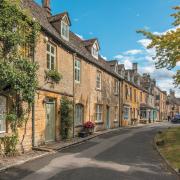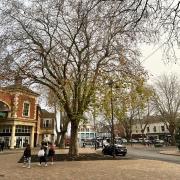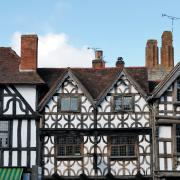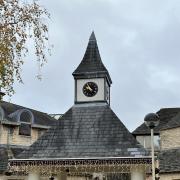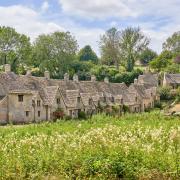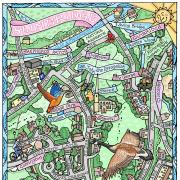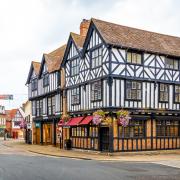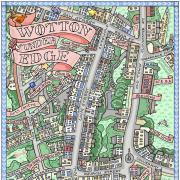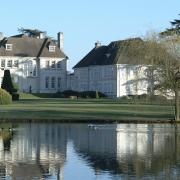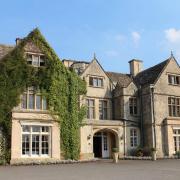In part ten of her series of things that have made the Cotswold economy, Hermione Taylor looks at the fashion for architectural fripperies, known fondly as follies
The Cotswolds is dotted with curiosities. Broadway Tower sticks up like a chess piece on Beacon Hill; the Temple of Diana stands like a Greek ruin amongst Blenheim’s manicured grounds; and visitors to Painswick Rococo Garden could be forgiven for thinking they have been transported to Italy. These are ‘follies’ – highly decorative buildings, which aren’t what they appear to be. But they aren’t just fripperies – even today, they can tell us much about the opulence of life in grand Cotswold houses, and the fashionable influences of the time.
The 1700s saw well-heeled young men (and occasionally women) venture abroad on a Grand Tour, taking in the ancient sites of Greece and Italy. Here, they developed a fashionable appreciation of classical architecture and romantic ruins… and wanted to replicate the same picturesque atmosphere at home. Large country houses such as Blenheim and Stowe soon saw their grounds dotted with classically-inspired architecture: a new-build take on an ancient style.
And it’s no coincidence that these two magnificent houses boast a magnificent clutch of follies – their gardens were both designed by the landscape designer Lancelot ‘Capability’ Brown. Brown’s nickname is said to come from his fondness for describing country estates as having great ‘capabilities’ for improvement and he began his career as head gardener at Stowe in 1741. It was there that he honed the sweeping, naturalistic style that made him so popular with country house owners across the country.
Follies were a key part of Capability Brown’s landscapes. At Stowe, Brown sculpted an area of parkland – known as the ‘Grecian Valley’ – which features monumentally large temples and a Grecian-looking Palladian bridge. Brown later went on to develop the landscape at Croome, in Worcestershire, where the gardens are filled with ‘eye-catchers’, including a panorama tower, rotunda and miniature castle.


You might also be surprised to hear that Capability’s influence was also behind one of the Cotswolds’ best-known follies – Broadway Tower. In the mid 1700s, Brown was carrying out work at Croome, and became well acquainted with the Earl of Coventry. When he purchased an estate of land on Beacon Hill overlooking Broadway years later, he again called upon Brown. The wheels were set in motion to build a castle-style folly.
The Saxon-style tower we see today was completed in 1799, despite Brown’s death in 1784. The tower was later leased by William Morris, pioneer of the Arts and Crafts Movement, who used it as a countryside retreat. If you visit Broadway today, you can even enjoy a drink at the Morris and Brown café – named after the two men who took such inspiration from the location.

But perhaps the most famous of all Brown’s landscapes is Blenheim. In 1763, Brown was called in to landscape the grounds around the newly finished palace. The sweeping naturalistic vistas we see today actually belie the huge amount of work that went into their creation: it took ten years and two dams to construct the lake that visitors enjoy today.
Blenheim’s grounds are also dotted with follies, including its 30-room Grand Bridge, a Temple of Health, a Roundel, and the Temple of Diana – now site of the Churchill Memorial Garden. These provided the perfect spot for upper-class flirtations. In fact, it was at Blenheim’s Temple of Diana that Churchill proposed to his wife in 1908. He is quoted as having said ‘at Blenheim I took two very important decisions; to be born and to marry. I am content with the decision I took on both occasions.’


But follies didn’t come cheap. Recent dredging of Blenheim’s famous Grand Bridge has revealed that it originally contained more than 30 rooms. Some of these contained fireplaces and vaulting, and there was even a room large enough to host a ball. By all accounts, the Bridge was designed for a good time: there was even a bathing place and boathouse where guests could be transported across from the main house.
The Grand Bridge represented a notoriously expensive component of a notoriously expensive build. Estimates suggest it cost between £20,000 and £30,000 to complete (the equivalent of over six million pounds today), and the cost of the ‘mad thing’ was said to have driven the Duchess of Marlborough to distraction. The Bridge was completed in 1708, but only 50 years later, its maze of internal rooms was flooded when Capability Brown enlarged the lake. In the fickle world of follies, fashions changed fast.

And nowhere proved more of a fashion victim than the beautiful Painswick Rococo Garden. Designed as an elaborate outdoor playroom, the gardens reflected the fun and frivolity of 1740s upper-class life, and feature a series of fantastical houses nestled amongst the trees. But by 1760, tastes began to change, and the garden was slowly altered. In the 1950s, the garden was planted with timber, and by the 1980s, it was completely overgrown.
But in 1984, the owners of Painswick House embarked on the challenge of restoring the garden, and the landscape now once again delights its visitors with its follies and pools. Couples can even get married at Painswick Rococo Garden, with famous red Eagle House proving a popular spot for intimate ceremonies. And as guests in their best clothes feast and frolic among the follies, you can almost feel that they have been restored to their original purpose.
References
- Britain Express: The History of Follies, britainexpress.com/History/follies.htm
- National Trust: Explore ‘Capability’ Brown’s landscape gardens, nationaltrust.org.uk/lists/explore-capability-browns-landscape-gardens
- National Trust: Croome’s outer eye-catchers, nationaltrust.org.uk/croome/lists/croomes-outer-eye-catchers
- Broadway Tower: visit-broadway.co.uk/blog/history-of-broadway-tower.php
- Capability Brown at Blenheim: historyextra.com
- Painswick Rococo Garden: rococogarden.org.uk






